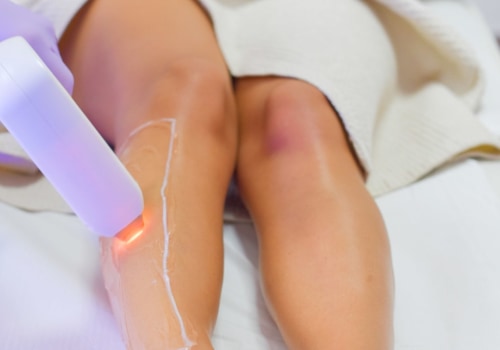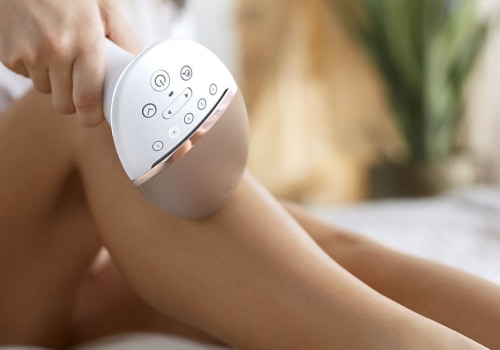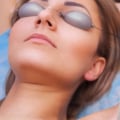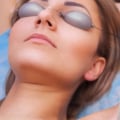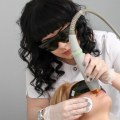Hair restoration in Beverly Hills is not only effective but also offers long-lasting results. The transplanted hair follicles are resistant to the factors that initially caused hair loss, making them a permanent solution to the problem. This means that once the procedure is completed and the hair has fully grown, individuals can confidently say goodbye to the hair loss caused by laser hair removal.
If you have been struggling with hair loss after laser hair removal, it's time to explore the possibilities of hair restoration in Beverly Hills. With expert guidance and personalized treatment plans, you can regain your confidence and enjoy a head of hair that you can be proud of.
Understanding The Causes Of Hair Loss
The causes of hair loss need to be understood in order to reverse them effectively after laser hair removal. Preventing hair loss is a concern for many individuals, particularly those who have undergone laser hair removal procedures. Laser hair removal can sometimes result in temporary or permanent hair loss in the treated areas due to damage to the hair follicles. To prevent and reverse this type of hair loss, it is important to explore various treatment options and prevention techniques.
There are several factors that can contribute to hair loss after laser hair removal. One common cause is the excessive heat generated by the laser during treatment, which can damage the follicles and lead to their dysfunction or destruction. Additionally, individual susceptibility plays a role, as some people may be more prone to experiencing adverse effects from laser treatments than others.
To address this issue, there are different approaches that can be taken. Hair loss treatments such as topical minoxidil or finasteride may help promote regrowth by stimulating blood flow and reducing inflammation in the scalp. Platelet-rich plasma (PRP) therapy is another option that involves injecting concentrated platelets into the scalp to stimulate natural hair growth.To address this issue, there are different approaches that can be taken. Hair loss treatments such as topical minoxidil or finasteride may help promote regrowth by stimulating blood flow and reducing inflammation in the scalp. Platelet-rich plasma (PRP) therapy is another option that involves injecting concentrated platelets into the scalp to stimulate natural hair growth.
Hair loss prevention techniques should also be implemented after laser hair removal. These include avoiding excessive heat styling tools, using gentle shampoos and conditioners, maintaining a balanced diet rich in nutrients essential for healthy hair growth, and managing stress levels.
Understanding the causes of post-laser-hair-removal-induced hair loss is crucial for developing effective strategies for reversing it. By utilizing appropriate prevention techniques and exploring available treatment options, individuals can take proactive steps toward regaining their lost hair after undergoing laser procedures.
Exploring Hair Restoration Options
One option worth considering when seeking to address the effects of laser hair removal on hair loss is exploring different methods of hair rejuvenation. For individuals who prefer non-surgical alternatives, there are various options available.
Platelet-rich plasma (PRP) therapy is one such alternative that involves injecting a concentrated form of the patient's own blood into the scalp, which contains growth factors that stimulate hair growth.
Another non-surgical approach is low-level laser therapy (LLLT), where light energy is utilized to promote hair regrowth.
Alternatively, individuals may choose to undergo hair transplant techniques to restore lost hair. Follicular unit transplantation (FUT) involves removing a strip of skin from the donor area and dissecting it into individual follicular units to be transplanted onto bald or thinning areas. FUE (follicular unit extraction) is another technique where individual follicular units are directly harvested from the donor area and transplanted.
When considering options for addressing the effects of laser hair removal-induced hair loss, individuals have various non-surgical alternatives, such as PRP therapy and LLLT, as well as surgical options like FUT and FUE transplant techniques. Additionally, medications like finasteride and minoxidil can prove beneficial for restoring lost hair.
The Process Of Hair Restoration
To understand the process of hair rejuvenation, it is important to consider the various steps involved in restoring natural hair growth. One common method used for hair restoration is a hair transplant, which involves removing healthy hair follicles from one area of the body and transplanting them into areas affected by hair loss. This procedure is typically performed under local anesthesia and requires meticulous skill to ensure successful transplantation.
After the hair transplant, patients can expect a period of recovery where they may experience some discomfort or swelling. It's crucial to follow post-operative instructions provided by the surgeon to minimize complications and promote proper healing. During this time, it's important to avoid any activities that could damage or dislodge the newly transplanted hairs.
Hair growth after a transplant occurs gradually over several months as the transplanted follicles establish a blood supply and begin producing new hair. Patients should be patient during this period, as results may vary depending on individual factors such as age, overall health, and genetics.
In addition to undergoing a hair transplant, individuals interested in addressing their hair loss often incorporate other preventive measures into their routine. These include using FDA-approved medications like minoxidil or finasteride, which can help slow down further hair loss and promote regrowth.
Overall, understanding the process of hair restoration involves recognizing that it encompasses more than just a single procedure. It requires careful consideration of individual needs and goals along with proper post-operative care instructions for optimal results in terms of natural-looking and long-lasting hair growth.
Maintaining And Caring For Restored Hair
Maintaining and caring for restored hair involves implementing a regular hair care routine that focuses on gentle cleansing, conditioning, and avoiding harsh styling techniques. After undergoing the hair restoration process, it is crucial to follow a proper maintenance regimen to ensure the longevity of the results.
When it comes to hair care products, it is important to choose those specifically designed for restored hair. These products often contain ingredients that promote hair growth and strengthen the newly transplanted follicles. Gentle shampoos and conditioners are recommended to avoid stripping away natural oils or causing irritation to the scalp.
Regular cleansing is necessary but should be done with caution. Overwashing can lead to dryness and breakage, so it is advised not to wash restored hair more than three times a week. Additionally, using lukewarm water instead of hot water can help maintain moisture in the scalp.
Conditioning plays a vital role in maintaining healthy, restored hair. Deep conditioning treatments should be applied at least once a week, focusing on nourishing both the scalp and the strands of hair. This helps replenish moisture levels and prevent brittleness.
Harsh styling techniques such as excessive heat styling or tight hairstyles should be avoided as they can weaken the new follicles. Instead, opting for gentle styling methods like air-drying or using heat protectant sprays before applying heat can help preserve the integrity of restored hair.
In conclusion, maintaining and caring for restored hair requires adopting a gentle cleansing routine, choosing appropriate products specifically formulated for restored hair, regular conditioning treatments, and avoiding harsh styling techniques. By following these guidelines diligently, individuals can prolong their desired results after undergoing laser hair restoration in Beverly Hills.
Contact The Best Hair Restoration Surgeon In Beverly Hills
In conclusion, hair restoration in Beverly Hills offers a ray of hope for individuals experiencing hair loss after laser hair removal. With the right guidance from the best hair restoration surgeon, like Dr. Tim Neavin, it is possible to reverse the effects of hair loss and regain a head of hair that instills confidence and self-assurance. Don't let hair loss define you instead, embrace the possibilities offered by hair restoration in Beverly Hills and embark on a journey toward regaining your natural hair.
Dr. Tim Neavin is an expert hair restoration surgeon. He also has a hair transplant clinic where he performs follicular unit extraction with NeoGraft, a robotic hair transplant, for hairline restoration and eyebrow transplantation. He received advanced training from world-renowned Beverly Hills plastic surgeons in face lifts, rhinoplasty, rhinoplasty revision, fat grafting, facial remodeling, and beautifying surgery for younger individuals. Contact him today to learn more about him.
